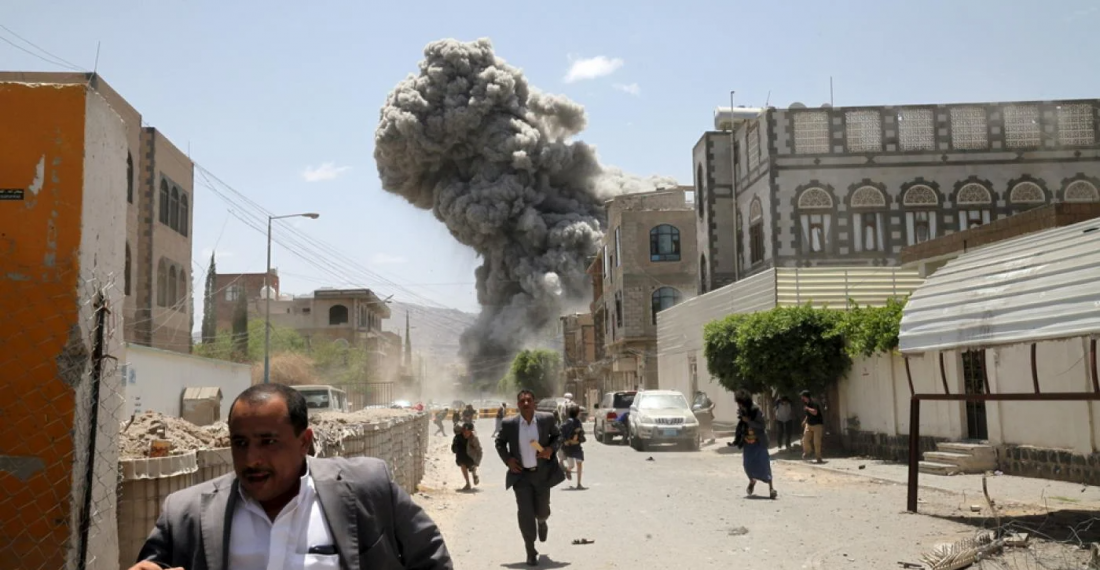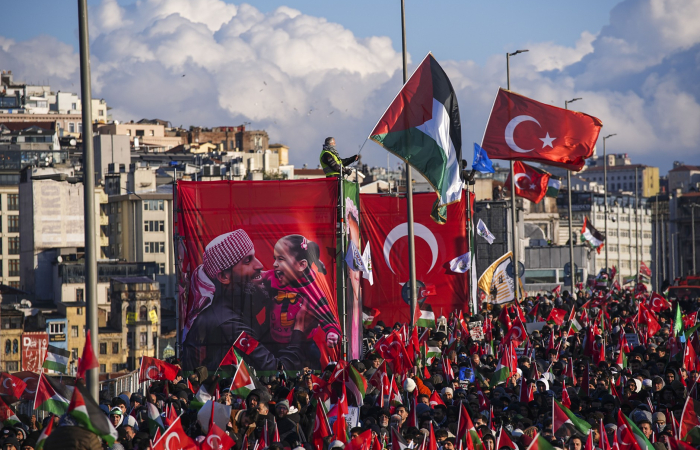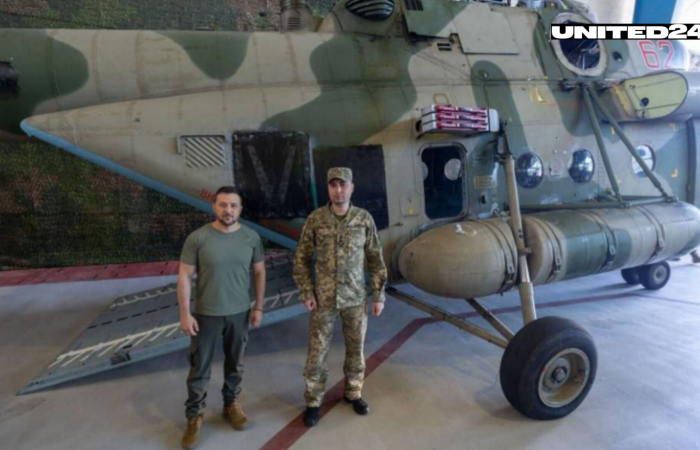In this piece for commonspace.eu, Mohammed Abdulmughni discusses why past attempts at brokering peace in Yemen's current civil war have failed. Part of the problem is the failure to address root causes, and numerous economic factors also serve as catalysts for the war, he argues. This article can also be read in Arabic here.
Wars often break out when the various ambitions of two or more opposing parties are irreconcilable by peaceful means. These ambitions could be related to territorial expansion, continuing a legacy of enacting “historical revenge” on the opposing party, or tyrannical desires based on ethnic and religious fanaticism. While wars can flare up quickly, stopping them on the other hand is almost always slow and difficult. This has been the case for almost all wars across history.
The Yemeni war is no exception. Indeed, the Yemeni war has many complex and overlapping dimensions, as has been noted by many observers and political analysts. In international law it is defined as being a local or civil war, between forces affiliated with the internationally recognised legitimate government, and the Houthi group, which the international community considers a violent rebel group. It has been a proxy war since 2014 when the Houthi group, backed by the Iranian regime, arrived in the Yemeni capital, Sana’a, and violently seized power on 21 September.
This was the first episode in a war which, after the involvement of the Arab coalition, would expand in area and scale. The advent of Saudi Arabia as the leader of the Arab coalition in March 2015 came at the request of the former Yemeni president Abdrabbo Mansour Hadi and as a Saudi reaction to Houthi skirmishes near its border. By 2015, the conflict fully transformed into proxy war as Iran and Saudi Arabia supported opposing sides, giving the conflict a second, regional dimension, on top of its original domestic dimension.
With these complicated, overlapping regional dimensions, clear prospects for a solution to the war have remained elusive, despite the intensive efforts of the United Nations to reach a settlement that would bring Yemen from war to peace.
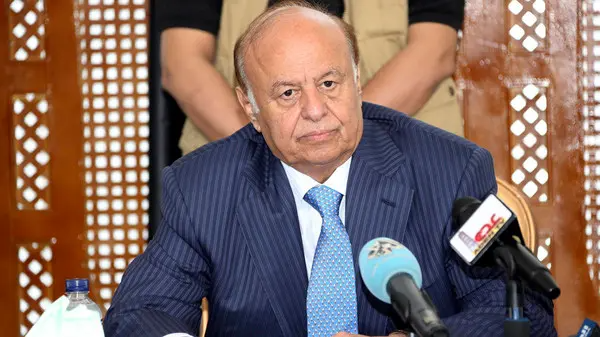
War as an extension of old conflicts between the government and the Houthi armed group
Between 2004 and 2010, the Houthis were in a constant state of fighting with the Yemeni government as the rebel group waged a guerrilla war known as "the Saada wars", after the mountainous Houthi stronghold province where fighting became particularly intense. Locally, it was known as the “Six Years Wars”. Come 2010, the Houthis had become a powerful military entity able to confront any authority in the country (1).
The Six Years Wars began in June 2004 when Yemeni authorities arrested Hussein al-Houthi - the leader of the Houthi movement at the time - on charges of establishing an armed organisation inside the country. Most of the battles happened around Saada but spilled over to the neighbouring governorates of Al-Jawf, Hajja and Amran. At the time, the regime of former President, Ali Abdullah Saleh, accused the Houthi movement of seeking to restore the Zaidi imamate and to overthrow the republican system that had been in place since 1962.
The Houthi group meanwhile accused the Yemeni government of discrimination and supporting the Salafist forces to suppress the Zaidi sect (2). The conflict gained international attention on 3 November 2009 when Saudi forces launched an attack against Houthi fighters who had taken control of Jabal al-Dukhan in the southwestern Saudi province of Jazan (3). By 2010, a truce was established between the two parties.
In 2011, the Houthis announced their support for the Yemeni youth revolution that took place against the regime of the now former President Ali Abdullah Saleh. The Houthis subsequently established relations with a number of anti-government activists, taking advantage of the power vacuum. They expanded their popular base and demanded a role in political and national decision-making in Yemen. At that time, the Houthis were able to mobilise tens of thousands in demonstrations in support of their cause in Saada, Amran, Al-Jawf, and Dhamar Governorates. They also restored their presence in Old Sana'a as it became easy to monitor whether imams and clerics in the Old City were showing their support for the Houthis (4).
All these overlapping movements and conflicts were factors that contributed to the Houthis' accession to power with their rebellion in 2014. Consequently, the Yemeni war reached its peak in 2015 after Sana'a was besieged and former President Abdo Rabbo Mansour Hadi was expelled from power in 2014 by the same radical group coming from Saada. This represented the beginning of the Houthi monopolisation of power in the country, fighting between all sorts of forces and political actors in Yemen, and the destruction of social and political structures in the country.
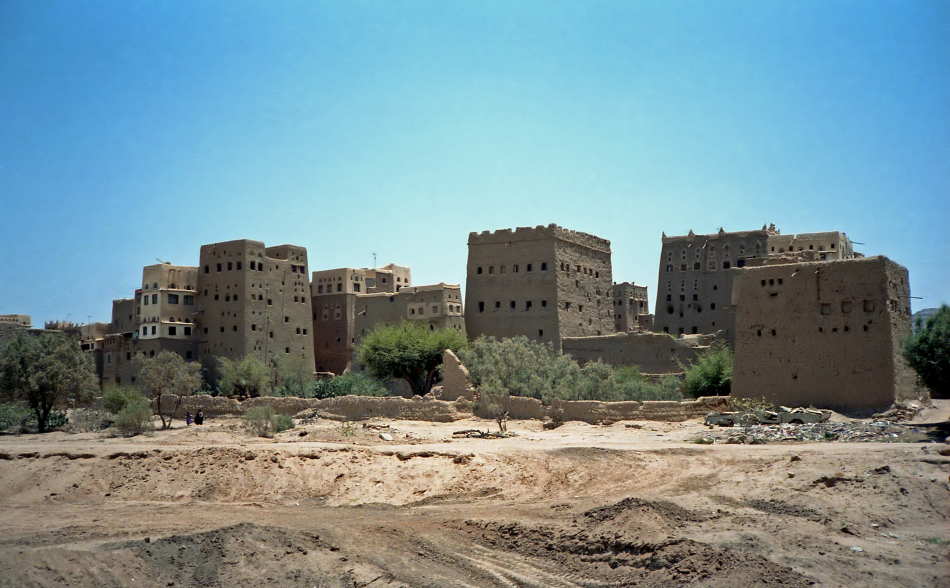
Numerous international initiatives in search for a lost peace
Under the auspices of the UN, the first round of negotiations between the recognised government and the Houthi group to explore possibilities for a ceasefire occurred in Geneva in 2015. But only a week after the talks, the Houthi group announced its refusal to implement the resulting United Nations Security Council resolution as it stipulated the imposition of sanctions on Houthi leaders and some other active parties in the Yemen conflict.
Later that year the second round of Geneva talks occurred in Biel, Switzerland, but these again ended in failure. The Yemeni government, through its foreign minister at the time, Riyad Yassin, held the Houthi delegation participating in the Geneva talks responsible for this failure (5).
The 2015 talks in Geneva were followed by another round of peace talks held in Kuwait in 2016. Lasting for more than ninety days, these talks also ended in failure and no agreement to resolve the crisis was reached. The UN envoy to Yemen at the time, Ismail Ould Cheikh, called on the Yemeni parties to take the initiative in implementing a series of confidence building measures while continuing to release detainees and refraining from taking any unilateral measures that could threaten the peace process. Ould Cheikh said at the time: “The biggest dilemma in the consultations lies in the lack of trust between the Yemeni parties, so we were focusing on the need to make concessions and take a step to advance the consultations.” (6)
Following the Stockholm consultations that ended in December 2018, the Houthis failed to implement their commitments concerning handing over the port of Hodeidah, and did not respect an agreement to open a humanitarian corridor between Hodeidah and Sana’a. This failure occurred despite the Houthis having formally announced that the process of repositioning at the port and handing it over to a Yemeni coast guard force had begun. The UN had already expressed doubt as to whether the Houthis had in fact taken any steps in this regard, and expressed its disappointment when it transpired that the coast guard forces responsible for taking control over the port were in fact loyal to the Houthis (7).
There were many other UN-sponsored discussions to try to reach humanitarian truces that would allow for the provision of aid. There were also consultations held in the Gulf countries with those directly involved in the Yemen conflict, such as Saudi Arabia in what was called the Riyadh consultations; or indirectly involved in the conflict, such as Oman in what was called the Muscat consultations. Despite all these attempts, a final vision leading to peace remained elusive.
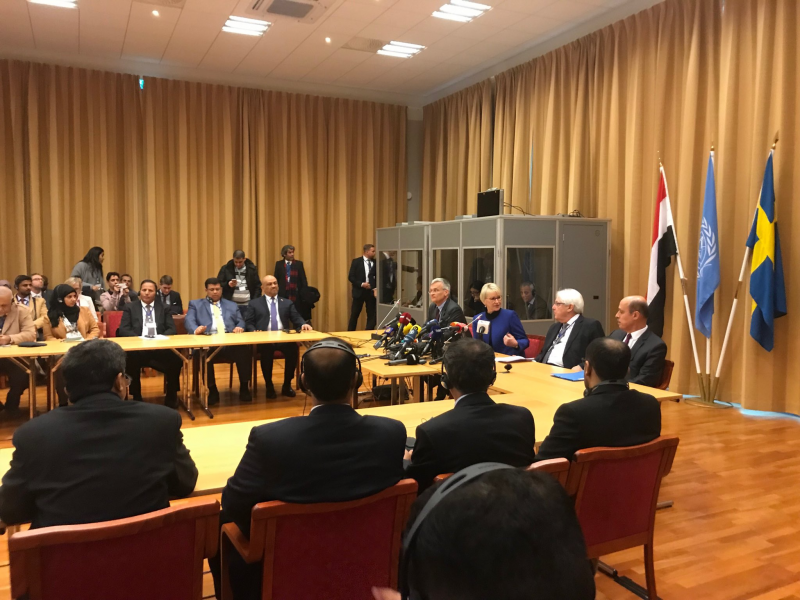
Calculations of loss and gain on the battlefield complicate prospects of peace
The failure of all of these international attempts to reach a political settlement in Yemen can be attributed to many factors. These include attempts by parties to reap political gains and impose unacceptable terms on the UN and the international community, while other factors include zero-sum calculations based on the situation on ground.
For example, the perception of losing ground has played a significant role in the war since 2014. This happens particularly when one of the warring parties considers accepting a ceasefire after a military setback, not in order to work towards the long-term cessation of hostilities, but rather to gain time, re-arm and reposition. And, as soon as that party is able to achieve gains on the battlefield, it breaks the ceasefire, threatens to double its combat capabilities and expand the circle of fighting, and, consequently, the humanitarian crisis. In this manner war has continued in Yemen for eight years. Looking at the efforts to end hostilities in recent times, it appears that there are several obstacles, with the latest being the refusal of the Houthi group to extend the humanitarian truce recommended by the UN.
In this context, a report by "Inside Arabia" explains how the Houthis managed in 2018 to take advantage of the Stockholm negotiations to avoid field losses and reposition militarily. At that time, the government forces, supported by the Arab coalition countries, were able to create sufficient military momentum to threaten the Houthis in Hodeidah. But, in order to avoid defeat in the Hodeidah campaign, the Houthis informed the UN envoy that they were ready to talk and negotiate. The UN envoy only had to seize the opportunity to demand the government forces halt their attack and sit at the negotiating table. (8)
Riyadh and Abu Dhabi bowed under international pressure and lifted the siege on Hodeidah. The internationally recognised government then headed to Stockholm for talks with the Houthis, resulting in a ceasefire agreement that should have placed the port of Hodeidah under UN control, and permitted an exchange of prisoners.
However, as mentioned earlier, the Stockholm Agreement was not implemented. On the contrary, the Houthis succeeded in strengthening their presence on the ground during the negotiation period, and reorganised their battle lines in the areas that were inevitably going to return to government control before the ceasefire (Ibid). Inside Arabia also confirmed in its report that the Stockholm Agreement saved the Houthis in Hodeidah and allowed them to reorganise before embarking on a successful military campaign to seize the Marib governorate.
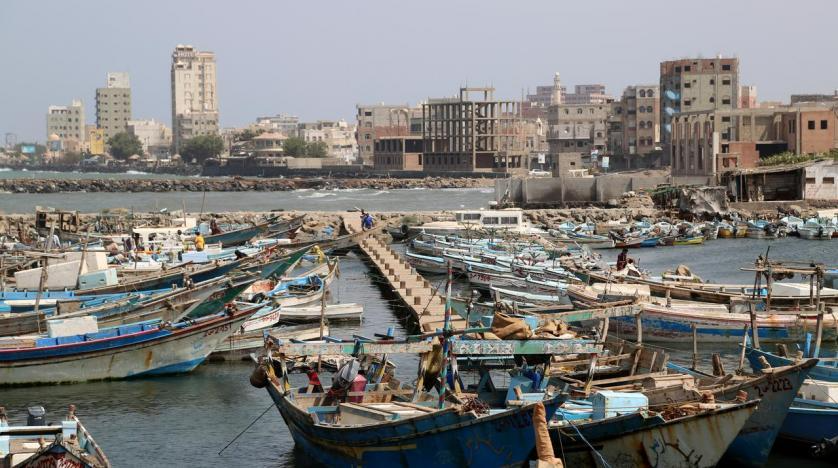
Neglecting the problem of dynastic supremacy fuels the Yemeni war
After eight years of fighting which have made Yemen one of the world’s most dangerous and fragile countries according to many international indicators, the world is still turning a blind eye to the roots of the Yemeni war and its long historical dimensions and causes. Instead, the world often views Yemen as only a humanitarian crisis and a war that threatens regional Gulf and international security. One tends therefore to analyse the symptoms of the war in Yemen, and not the disease causing it.
Both the international community and media organisations are by and large not very aware of how groups with extreme ideologies arose inside Yemen and what their motives are. The international community has a limited understanding of such groups despite their massive influence inside Yemen. The international narrative is limited to either describing the crisis as a reflection of an international competition with Iran and the nuclear file, or as a crisis related to Gulf security. Both of these misunderstandings of Yemen have dominated throughout the recent years.
Amid these misunderstandings, one of the most significant ideological issues often overlooked is the dynastic arrogance upheld by Houthis and their preference of people based on family origins. The Houthis’ prerogative belief is that there should be one party that is entitled to rule the country according to their own religious beliefs, based on almost racist motives that the rest of the world rejected hundreds of years ago.
The rise of economic catalysts for war
The war economy in Yemen also plays a major role in prolonging the ongoing fighting, as a large part of the state's economic resources are allocated to war and weapons. Regional supporters, whether Iran or the Gulf states, also pitch in with resources to their parties and local agents inside Yemen.
The Houthis’ main sources of income are earnings from permanent taxes that they impose on citizens in areas under their control, profits from their extensive financial networks, and support from Iran. Local and international news reports periodically confirm that Iran has and continues to support the Houthi group through either shipments of weapons, drones, and missiles, or through smuggling fuel and money to the Houthis (9).
On the other hand, Gulf countries also provide generous financial and military support for the Yemeni government and military. This includes weapons and forming military camps. Gulf countries also financially support government leaders, diplomats, military officers and opinion-shapers, yet the bulk of financial support is still given to party and tribal leaderships.
Conclusion
International calls to stop the fighting and urgently embark on a peace process in Yemen are increasing by the day. Local calls and demands in the same vein are also increasing across Yemen. After years of failed attempts at creating a lasting peace, a peace process must be built on realistic mechanisms that preclude a return to the same vicious circle of violence or a return to the original starting position in the negotiations.
One crucial step is to adhere to transparency with regards to what is happening in the peace talks, what are the main discussion points, and what are the obstacles and the actors preventing progress in the talks. A continuation of the same vicious circle that does not discuss and address the root causes and dimensions of the war in Yemen would condemn Yemenis to yet more misery in an already difficult and draining daily struggle.
source: Mohammed Abdulmughni is a journalist and blogger whose work focuses on the conflict and the dimensions of the humanitarian crisis in Yemen. He has worked for several print and visual media as well as civil society organisations in both Yemen and Turkey. Mohammed currently resides in Germany and has authored many journalistic materials and reports, as well as research papers with which he participated in a number of Arab and European events and discussions concerned with Yemeni affairs and the Middle East. He holds a Bachelor's degree in Journalism and Media from Sana'a University, Yemen.
photo: Middle East Eye
The views expressed in opinion pieces and commentaries do not necessarily reflect the position of commonspace.eu or its partners



